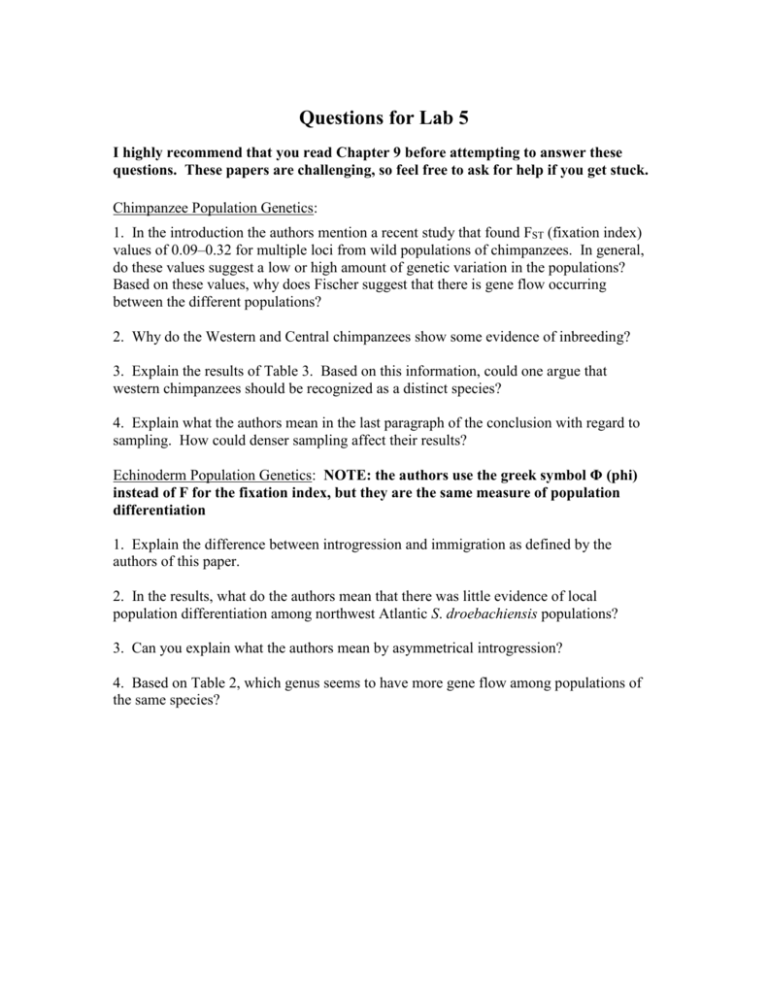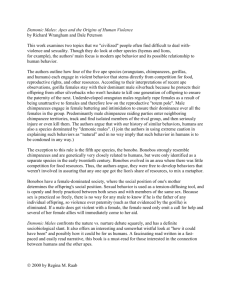Questions for Lab 5
advertisement

Questions for Lab 5 I highly recommend that you read Chapter 9 before attempting to answer these questions. These papers are challenging, so feel free to ask for help if you get stuck. Chimpanzee Population Genetics: 1. In the introduction the authors mention a recent study that found FST (fixation index) values of 0.09–0.32 for multiple loci from wild populations of chimpanzees. In general, do these values suggest a low or high amount of genetic variation in the populations? Based on these values, why does Fischer suggest that there is gene flow occurring between the different populations? 2. Why do the Western and Central chimpanzees show some evidence of inbreeding? 3. Explain the results of Table 3. Based on this information, could one argue that western chimpanzees should be recognized as a distinct species? 4. Explain what the authors mean in the last paragraph of the conclusion with regard to sampling. How could denser sampling affect their results? Echinoderm Population Genetics: NOTE: the authors use the greek symbol Φ (phi) instead of F for the fixation index, but they are the same measure of population differentiation 1. Explain the difference between introgression and immigration as defined by the authors of this paper. 2. In the results, what do the authors mean that there was little evidence of local population differentiation among northwest Atlantic S. droebachiensis populations? 3. Can you explain what the authors mean by asymmetrical introgression? 4. Based on Table 2, which genus seems to have more gene flow among populations of the same species?











